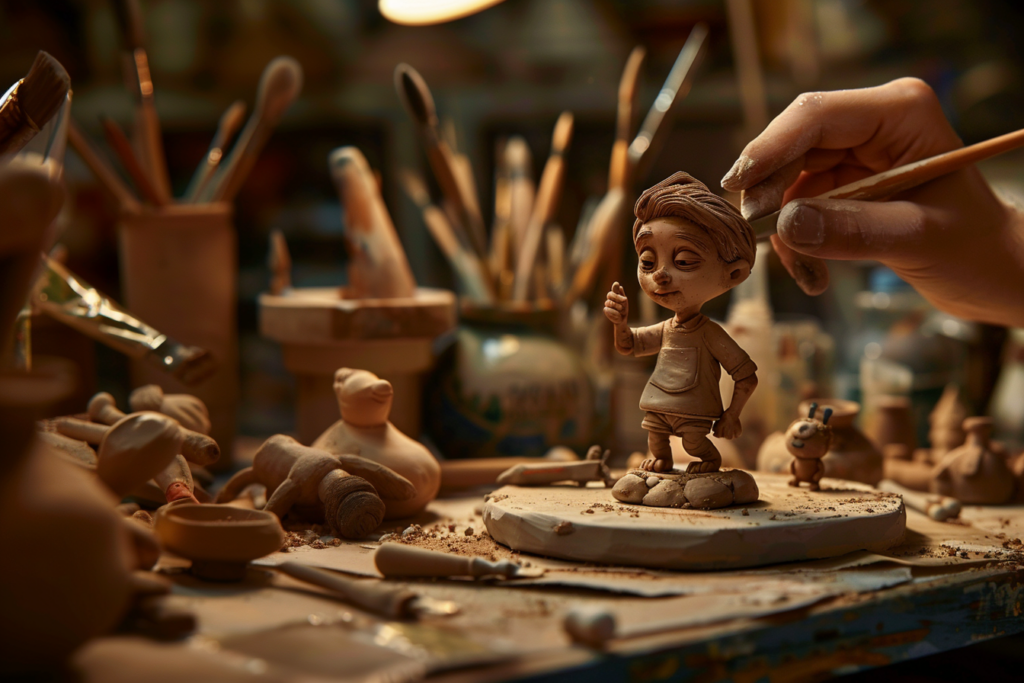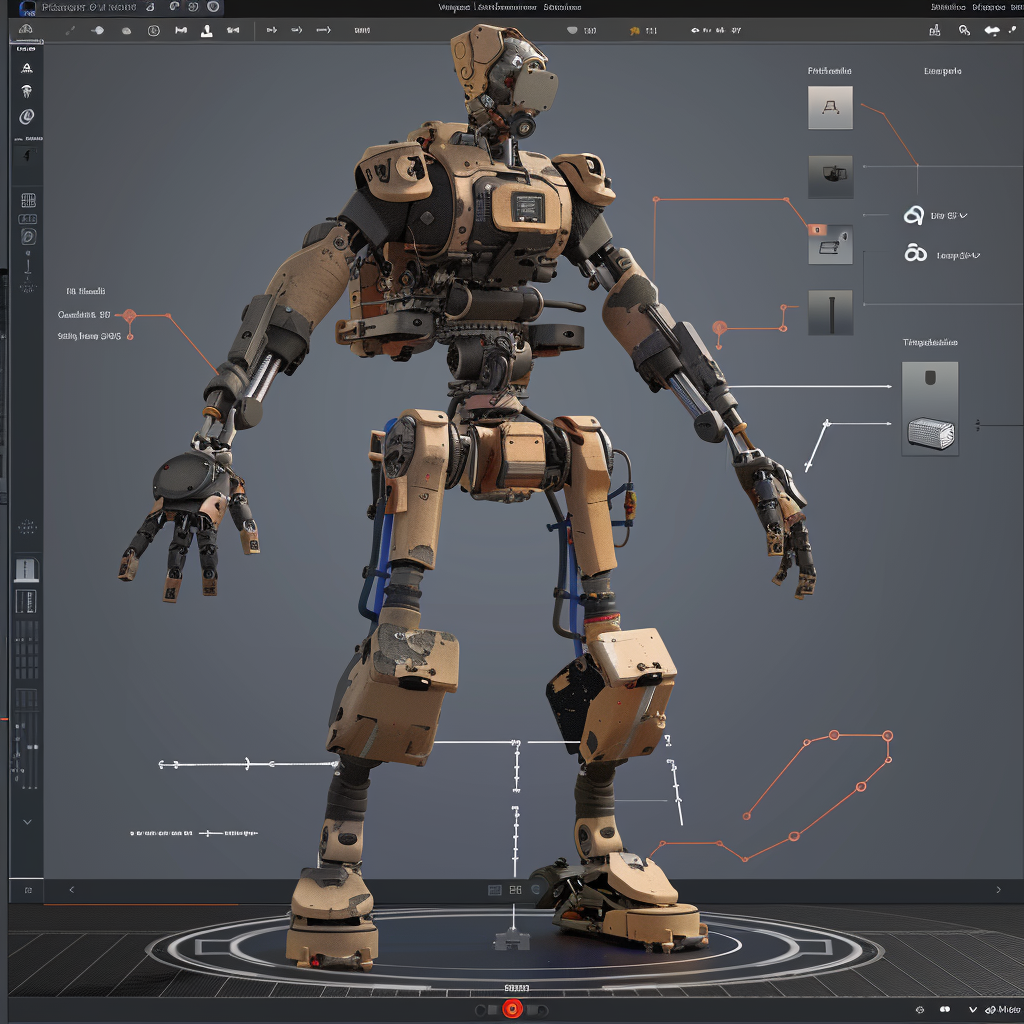I believe in the sanctity of our soul. I believe there are many things about us that we don’t understand. I believe that there is a lot of love and compassion, that is not explainable in terms of neural networks and computational algorithms.
Kai-Fu Lee – Ai researcher and author
His words resonate deeply within the animation industry, and me, currently grappling with the transformative power of generative AI. While AI promises to revolutionize animation, speeding up workflows and democratizing access, it also sparks concerns about homogenization, job displacement, and the potential loss of the very essence that defines animation: the human soul.

The Rise of the Machines
Generative AI models like Dall-E 21 and Midjourney2 have become the talk of the town, their ability to conjure stunningly realistic images and videos, like the ones we’ve currently seen from Sora3, from mere text prompts nothing short of mind-blowing. This technology is rapidly evolving, and its application in animation is becoming increasingly sophisticated. Imagine generating an entire scene, complete with characters, lighting, and animation, with just a few words. This is the promise of generative AI, a promise that both excites and unsettles traditional 3D animators.
3D applications and developers are already embracing AI in exciting ways!4 Imagine software that automatically rigs complex characters, reducing tedious setup time for animators. AI-powered tools are also assisting with animation itself, suggesting natural movements based on physics and reference data. Additionally, programs are learning to analyze scenes and adjust lighting, shadows, and textures for optimal realism. Even character creation is getting a boost from AI, with algorithms generating diverse and unique designs based on user preferences. While still in its early stages, AI integration is already streamlining workflows, boosting efficiency, and unlocking new creative possibilities for 3D artists. This trend is only set to accelerate, paving the way for a future where AI and human creativity collaborate to push the boundaries of 3D animation.
A Challenge or an Opportunity?
Proponents hail generative AI as a democratizing force, making animation accessible to anyone with a creative vision and an internet connection. This, they argue, could lead to an explosion of creativity and diverse voices, enriching the industry. Additionally, AI could handle repetitive tasks, freeing up animators to focus on more nuanced and expressive aspects of their work.
However, critics raise concerns about the potential homogenization of animation, with everyone using the same tools and techniques, leading to a bland uniformity. Job displacement is another major fear, with AI automation potentially replacing human animators. Furthermore, the ethical implications of AI-generated content, such as the potential for deepfakes and misinformation, raise serious questions.
The Future of Animation: A Symbiotic Dance?
The future of animation isn’t a battle between humans and machines, but rather a graceful and mutually beneficial partnership. Imagine this:
AI as a powerful assistant: Tedious tasks like rigging, basic animation, and repetitive background generation become AI’s domain, freeing up animators to focus on complex character animation, nuanced storytelling, and artistic expression.
AI for rapid prototyping: Need to test out different scene ideas quickly? AI can generate rough visuals based on text prompts, allowing for faster iteration and feedback loops.
AI as a creativity catalyst: Stuck in a rut? AI can suggest unexpected visual styles, character designs, or animation techniques, sparking new ideas and pushing creative boundaries.
AI for personalized content: Imagine an AI that adapts animation styles based on individual viewer preferences, creating a truly immersive and personalized experience.
AI for accessibility: Generative AI can make animation creation more accessible to people with disabilities or limited resources, democratizing the art form further.
This symbiotic dance won’t be without challenges. Integration of AI tools into workflows will require training and adaptation. Striking a balance between AI-generated visuals and the human touch will be crucial to avoid homogenization. Ethical5 considerations surrounding AI-created content must be addressed.
But by embracing AI as a partner, not a competitor, animators can unlock a future brimming with possibilities. Imagine heart-wrenching stories told through a blend of AI-generated environments and meticulously crafted character animation. Imagine animation that adapts to individual viewers, creating a unique and emotional connection with each person. Consider a world where animation is more accessible, more diverse, and more impactful than ever before.
This future is not a distant dream, but a path we can pave together, humans and AI in a graceful and mutually beneficial dance. By embracing the strengths of each, we can create animation that is not just technically impressive, but also deeply moving, emotionally resonant, and truly human.
The Soulful Spark: Why Human Animators Remain Essential
While AI has made impressive strides in generating visuals, it currently lacks the crucial ingredient that defines great animation: the human touch. This touch goes beyond technical skill and encompasses the ability to breathe life into characters, evoke emotions in viewers, and tell stories that resonate deeply. Here’s why human animators will likely remain irreplaceable:
1. The Power of Subtext and Nuance: Emotion in animation isn’t just about exaggerated expressions and grand gestures. It’s about the subtle nuances, the micro-expressions, the flickers of doubt or joy that flicker across a character’s face. These subtle details speak volumes, and capturing them requires an understanding of human emotion that AI currently lacks.
2. The Art of Storytelling: Animation isn’t just about creating moving pictures, it’s about weaving narratives that captivate audiences. This involves crafting compelling characters, building tension and release, and delivering moments of surprise and delight. AI can follow pre-programmed story beats, but it lacks the ability to improvise, adapt, and inject unexpected moments of brilliance that make a story truly unforgettable.
3. The Empathy Bridge: Great animation connects with us on a personal level. It makes us laugh, cry, and feel for the characters on screen. This connection is built on empathy, the ability to understand and share the emotions of others. While AI can process data and generate emotional responses, it lacks the lived experience and understanding of the human condition that allows true empathy to shine through.
4. The Spark of Creativity: Animation, at its core, is an art form. It’s about pushing boundaries, experimenting with styles, and expressing unique visions. AI can mimic existing styles and generate variations, but it struggles with true originality. The spark of creativity, the ability to see the world in a new light and translate it into animation, remains firmly in the human domain.
5. The Human Touch: A Signature Style: Even the most technically impressive AI-generated animation often feels sterile and lacks a distinct personality. Human animators, on the other hand, infuse their work with their experiences, perspectives, and artistic choices. This personal touch creates a unique style that resonates with audiences and sets their work apart.
In Conclusion
Generative AI presents both challenges and opportunities for the animation industry. It is a powerful tool that can streamline workflows, democratize access, and push the boundaries of creativity. However, it is crucial to remember that AI is just a tool, and the human touch will always be valued. The future of animation lies in embracing this new technology while staying true to the core principles that define the art form: storytelling, emotion, and the human soul. As Kai-Fu Lee 6 reminds us, there are aspects of our creative spirit that AI cannot replicate, and it is in nurturing these very aspects that animation will continue to captivate and inspire audiences for generations to come

If you enjoyed this article, please consider commenting, liking, or sharing it with your network. Your engagement greatly contributes to spreading the insights provided. For more content like this, don’t forget to follow us. Your support fosters a community eager to explore and discuss innovative ideas together. Let’s keep the conversation going and dive deeper into our shared interests.
- DALL-E 2: https://openai.com/dall-e-2 ↩︎
- Midjourney AI: https://www.midjourney.com/ ↩︎
- Sora is a new Text to Video AI by Open.ai:https://openai.com/sora ↩︎
- stability.ai: Stable Diffusion for Blender3D: https://platform.stability.ai/docs/integrations/blender ↩︎
- Read more about AI and Ethics in my article: Securing Trust in the Age of Generative AI: The Imperative for Watermarking and Legal Safeguards against Synthetic Media ↩︎
- Get to know more about Kai-Fu Lee here: https://en.wikipedia.org/wiki/Kai-Fu_Lee ↩︎
Leave a Reply